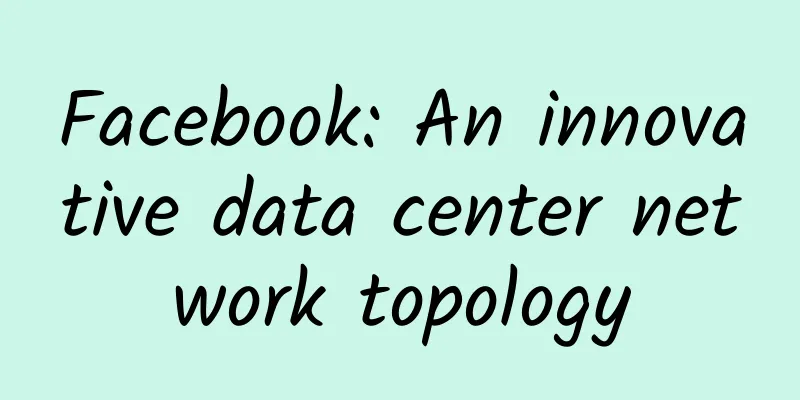With blockchain, data center data security will be higher

|
Traditional data centers cannot always meet the needs of a large number of users to retrieve data in real time. The surge in demand for big data has put pressure on data centers, which requires data centers to increase data transmission speeds to accommodate more Internet users. Therefore, data centers are now changing their main functions from storage to real-time data analysis based on demand. This functional transfer makes blockchain more valuable, as it can verify changes to data sets across multiple data centers. However, this approach also requires an infrastructure that can meet the high-bandwidth secure and fast data transmission system for data, video, and audio transmission. Now, many data centers are transforming their traditional network architecture to one that can meet the data processing needs of blockchain systems. Infrastructure changes Traffic in traditional data centers is mainly between clients and servers, but server-to-server traffic dominates in Internet data centers that support cloud computing applications. Internet data centers must also provide an uninterrupted experience for users with diverse needs. Therefore, the network architecture of these data centers needs to handle normalized traffic peaks more efficiently. The architecture used in most data centers today is a tree network consisting of three levels, including a core layer, an aggregation layer, and an access layer. This model can be effective when transmission is mainly between clients and servers. But it is less so for applications that require high bandwidth and latency becomes an issue. Large data centers are now migrating to a leaf-spine network architecture because it is more efficient in transferring data between servers. However, the cabling of this architecture is much more complicated because leaf switches are required to connect each spine switch. The main distribution area (MDA) of a data center using a leaf-spine network architecture has a higher server density, which requires greater cooling capacity. The MTP to LC module is beneficial to this architecture because it can achieve full meshing of leaf switches without splitting the 40G port of the spine switch into four 10G channels. Once the infrastructure can support the required traffic, data centers will be able to more effectively protect their data. Blockchain is becoming a popular solution for data security. This is because the encryption method used by blockchain can distribute data across multiple servers. This method makes blockchain difficult to hack, because each block generally contains only a cryptographic hash function of the previous block. Blockchains were originally used to protect cryptocurrencies such as Bitcoin, but they are also being used to provide data security outside the financial sector. Data centers that store sensitive data are the first to adopt blockchain as a secure storage method. Future needs Due to the increasing popularity of 5G networks and the Internet of Things (IoT), data center infrastructure will need to support more connected devices. During the transformation process, data centers will also need to meet the needs of increased traffic and secure storage. By using servers that can withstand higher density, the leaf-spine network architecture will provide an economical solution for distributed data management. This architecture can upgrade the bandwidth of large data centers from 10G to 40G and facilitate the transition to 100G networks in the future. Therefore, the practice of data centers adopting blockchain technology to improve the security of data storage is worth referring to. |
>>: How to make 5G a reality and what are the current challenges facing 5G?
Recommend
Global 5G users will reach 3.5 billion by 2026
Globally, more than 1 billion people, or 15% of t...
What is the difference between Cookie and Session in HTTP protocol?
HTTP is a stateless protocol, that is, each time ...
2017 year-end planning: Five sharp words to help you review the IT operation and maintenance of the year
Speaking of 2017, Bitcoin has experienced several...
CloudCone promotional annual payment of $9.99 VPS restock, Los Angeles MC data center
CloudCone has added more inventory to the Hashtag...
Don't be afraid of DNS interview questions anymore: experts use 1 big picture and 9 steps to easily deal with them
[[319621]] [51CTO.com original article] It's ...
Communication styles in microservices architecture
In a microservices architecture, communication is...
Shi Kai: ThoughtWorks creates a competitive advantage for you
[51CTO.com original article] On December 1-2, 201...
Driving innovation and unleashing the unlimited potential of fiber optic LAN
It’s no secret that there are hard limits associa...
Is the slowdown in the growth of China Mobile's 5G package users intentional, or are there other reasons?
In terms of the development of 5G package users, ...
Why 5G won’t replace Wi-Fi 6 at the edge anytime soon
[[419672]] The shift to hybrid work and widely di...
Huawei: Realizing a truly bright future for the Internet of Things
Huawei has always been an active promoter and pra...
AkkoCloud: 110 yuan/month, CN2 GIA, Germany, 1.5G memory, 20G SSD hard drive, 1.5T monthly traffic
AkkoCloud is a Chinese hosting company establishe...
The 30th anniversary of Zhongchuang Software: persistence and perseverance have created glory, and Xinchuang has provided broad space for independent innovation of middleware!
Since 1991, Zhongchuang Software Engineering Co.,...
[6.18] V5.NET 20% off monthly payment for all independent servers, 30% off for specific models in Tsuen Wan, Hong Kong
V5.NET has launched this year's 618 promotion...
More intelligent CDN technology, CDN moves towards the 3.0 era
Our lives are dependent on the Internet all the t...









